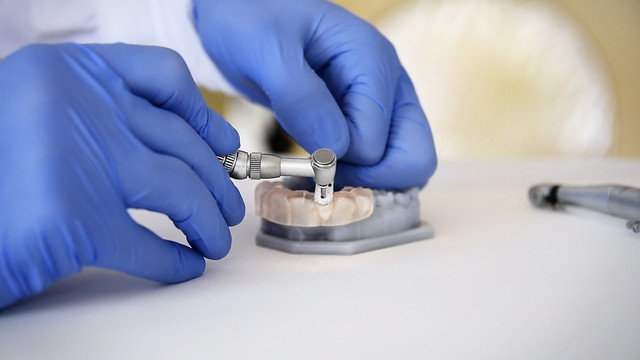An interesting article titled “Comparison of a piezoelectric and a standard surgical handpiece in third molar surgery” appears in the 2019 edition of Oral Surgery written by Gopal et al (vol. 12, pp. 30-34). The article discusses if there are any advantageous to using either a piezoelectric handpiece or a standard surgical handpiece with respect to outcomes after wisdom teeth surgery.
In the article the authors describe how a piezoelectric handpiece can allow for micrometric cuts with maximum surgical precision and minimal damage to soft tissue. A study was devised including 30 patients who presented in Cape Town, South Africa for removal of all 4 wisdom teeth. The patients had their wisdom teeth removed on one side using a piezoelectric handpiece and on the other side using a standard surgical handpiece and thus a split-mouth design was used. All surgeries were performed by the same surgeon. All patients received the same medication protocol with 1000 mg of paracetamol and 400 mg of ibuprofen given for pain and swelling and 500 mg of amoxicillin given to avoid infection. The authors recorded the time of surgery, bleeding intraoperatively, swelling 24 hours after surgery, pain 24 hours after surgery, any complications at the end of surgery, and any nerve paraesthesia 24 hours after surgery.

The authors found the average time of surgery in each patient to be 26 minutes and the average time to remove wisdom teeth was statistically significantly longer using a piezoelectric handpiece versus the standard handpiece, 14.97 minutes and 11.87 minutes respectively. It was found that the standard handpiece caused more swelling and pain after surgery than using a piezoelectric handpiece but neither was a statistically significant result. It was found that the standard handpiece caused more bleeding in seven patients and there was statistically signficantly more bleeding associated with using the standard handpiece than the piezoelectric handpiece. In two of the cases using the standard handpiece there was paraesthesia of the lower lip 24 hours after surgery but no paraesthesia was reported when using the piezoelectric handpiece. There were no cases of lip trauma or damage to teeth or soft tissue. The authors state
“Rotary handpiece reduce operative time and have superior cutting ability; however, they cause more pain, swelling and increase risk of injury to adjacent tissues. On the other hand, piezoelectric devices are safer to use and cause reduced bleeding, pain and swelling though more time-consuming and expensive.”
The authors feel that selection of either the standard handpiece or the piezoelectric handpiece should be based on the difficulty of osteotomy (bone cutting), risk of damage to tissue, and other outcomes after surgery. If there is going to be extensive bone removal and tooth sectioning associated with extraction of the wisdom tooth than the time it takes using a piezoelectric handpiece will likely be significantly longer than using a standard handpiece. The authors suggest using a piezoelectric handpiece in cases where the inferior alveolar nerve is close to the wisdom tooth being removed.
